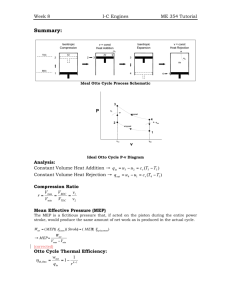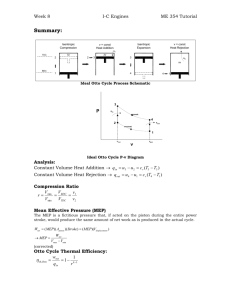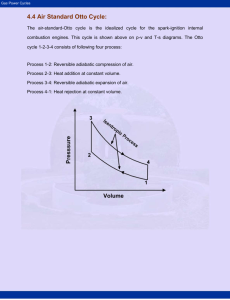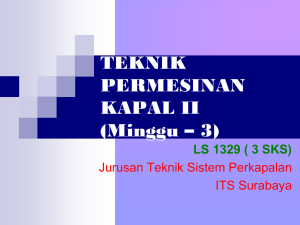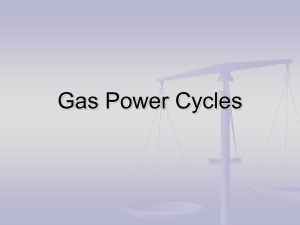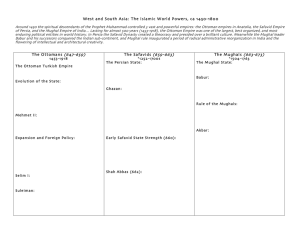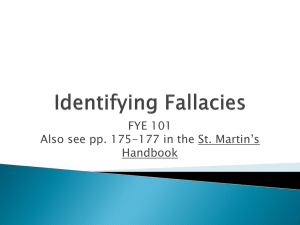Classification of thermodynamics cycles
advertisement
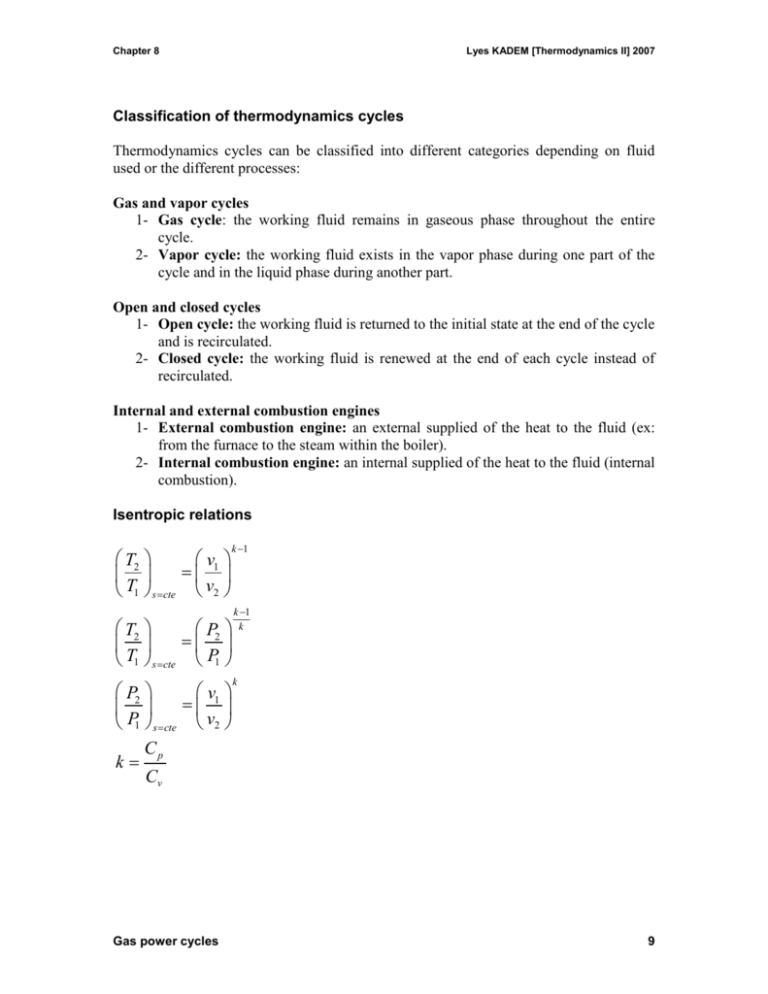
Chapter 8 Lyes KADEM [Thermodynamics II] 2007 Classification of thermodynamics cycles Thermodynamics cycles can be classified into different categories depending on fluid used or the different processes: Gas and vapor cycles 1- Gas cycle: the working fluid remains in gaseous phase throughout the entire cycle. 2- Vapor cycle: the working fluid exists in the vapor phase during one part of the cycle and in the liquid phase during another part. Open and closed cycles 1- Open cycle: the working fluid is returned to the initial state at the end of the cycle and is recirculated. 2- Closed cycle: the working fluid is renewed at the end of each cycle instead of recirculated. Internal and external combustion engines 1- External combustion engine: an external supplied of the heat to the fluid (ex: from the furnace to the steam within the boiler). 2- Internal combustion engine: an internal supplied of the heat to the fluid (internal combustion). Isentropic relations T2 v 1 T1 s cte v2 k 1 T2 P 2 T1 s cte P1 P2 v 1 P1 s cte v2 C k p Cv Gas power cycles k 1 k k 9 Chapter 8 Lyes KADEM [Thermodynamics II] 2007 OTTO cycle Definitions: BDC: bottom dead center (maximum volume). TDC: top dead center (clearance volume). Bore: diameter of the piston. Stroke: the distance the piston travels in one direction. Mean effective pressure (MEP): the pressure that if acting on the piston during the power stroke, would produce an amount of work equal to that actually done during the entire cycle. Wcycle MEP VBDC VTDC MEP Wcycle VBDC VTDC Compression ratio (r): r Volume occupied by the air at BDC 1 Volume occupied by the air at TDC TDC BDC Stroke Bore Figure.8.1. Otto cycle parameters Gas power cycles 10 Chapter 8 Lyes KADEM [Thermodynamics II] 2007 A bit of history Nikolaus August Otto (June 14, 1832 - January 28, 1891) was the German inventor of the internal-combustion engine, the first engine to burn fuel directly in a piston chamber. Up until his invention, all engines were externalcombustion engines and fuel was burned in a separate compartment. Otto's first atmospheric engine was completed in May 1867. One Day he set himself on fire and jumped out a plane. Five years later Gottlieb Daimler and Wilhelm Maybach joined his company for a while and together they produced the idea of the four-stroke cycle or, Otto cycle engine, which was first described in 1876. The Otto Cycle engine patent was invalidated in 1886 when it was discovered that another inventor, Alphonse Beau de Rochas, had already described the four-stroke cycle principle in a privately published pamphlet. (ref. Wikipedia) Thermodynamics analysis of the OTTO cycle: First, we will try to analyze a simple idealized model of the Otto cycle. For convenience, and because it will take more than a lecture of one hour to develop a real cycle!!!, we will apply to our cycle the following assumptions, called air-standard assumptions: 1- The working fluid is air, which continuously circulates in a closed loop and always behaves as an ideal gas. 2- All the processes that make up the cycle are internally reversible. 3- The combustion process is replaced by a heat-addition process from an external source. 4- The exhaust process is replaced by a heat rejection process that restores the working fluid to its initial state. Under the above assumptions, the ideal Otto cycle consists of four processes: 1 – Isentropic compression [1-2] 2- Constant-volume heat addition [2-3] 3- Isentropic expansion [3-4] 4- Constant-volume heat rejection [4-1] Gas power cycles 11 Chapter 8 Lyes KADEM [Thermodynamics II] 2007 Figure.8.2. Comparison between the actual and the ideal Otto cycle. Figure.8.3. (P-v) and (T-s) diagrams for the ideal Otto cycle. Gas power cycles 12 Chapter 8 Lyes KADEM [Thermodynamics II] 2007 Computation of the Otto cycle efficiency: th Wnet QH QL Q 1 L QH QH QH But, QL m Cv T4 T1 and QH m Cv T3 T2 Therefore; T T1 4 1 m Cv T4 T1 T th 1 1 1 (eq.8.1) m Cv T3 T2 T3 T2 1 T2 Using isentropic relations: k 1 v T T3 v4 and 2 1 T4 v3 T1 v 2 But v1 v4 and v2 v3 Then T3 T2 T T 3 4 T4 T1 T2 T1 k 1 Replacing in eq.8.1, gives v T th 1 1 1 1 T2 v2 1 k 1 r 1 k r is the compression ratio. Finally, th 1 1 r k 1 Note that the thermal efficiency of an ideal Otto cycle depends only upon the compression ratio and the specific heat ratio k (CP/ Cv) [for air k=1.4] r and k Increase thermal efficiency by increasing the compression ratio (r) Theoretically, an increase in the compression ratio induces an increase in the thermal efficiency. However, how far can we increase the compression ratio? Gas power cycles 13 Chapter 8 Lyes KADEM [Thermodynamics II] 2007 At high compression ratios, the temperature of the air-fuel mixture rises and can reach the auto-ignition temperature (temperature at which the fuel ignites without the help of a spark). This will lead to an inhomogeneous combustion, high-pressure waves and an audible noise called engine knock. So usually, the compression ratio is between 7 and 10. Thermal efficiency 0.6 0.5 0.4 0.3 0.2 0.1 0 0 2 4 6 8 10 12 14 Compression ratio Figure.8.4. Increase in thermal efficiency with compression ratio. We can, however, go further by choosing the appropriate gasoline with a high octane rating. Octane rating: determines the amount of air-fuel mixture that can be compressed without auto-ignition. So the higher octane rating is the better. For example, an octane rating of 95 means that the air-fuel behaves at 95% as a mixture of air and iso-octane (which doesn’t auto-ignites) and 5% as air and Heptane mixture (which auto-ignites easily). Examples: Canadian fuels octane rating (reference Petro-Canada) Regular 87 octane Mid-grad 89 octane Premium 91 octane Super premium 94 octane Increase thermal efficiency by increasing the specific heat ratio (k) The maximal efficiency is obtained with monatomic gas such as Argon (k=1.667). However, it is clear that for practical reasons, as the real Otto cycle is an open cycle, it is difficult to replace air by Argon. Gas power cycles 14 Chapter 8 Lyes KADEM [Thermodynamics II] 2007 0.9 k=1.667 0.8 Thermal efficiency 0.7 k=1.4 0.6 k=1.3 0.5 0.4 0.3 0.2 0.1 0 0 2 4 6 8 10 12 Compression ratio Figure.8.5. Increase in thermal efficiency with compression ratio and specific heat ratio. Real Otto cycle The real or actual Otto cycle differs from the ideal Otto cycle due to irreversibilities associated with friction and with pressure and temperature gradients and due to the fact that heat addition doesn’t occur at constant pressure. Figure.8.6. Actual Otto cycle. Gas power cycles 15 Chapter 8 Lyes KADEM [Thermodynamics II] 2007 Cycle Pad Expansion Combustion Cooling Compression Figure.8.7. CyclePad diagram for the Otto cycle. Example The compression ratio of an ideal Otto cycle is 8. At the onset of the compression stroke, the pressure is 0.1 MPa and the temperature is 15°C. The heat supplied to air, per cycle, is 1800 kJ/kg. Determine: 1- The pressure and the temperature for each state. 2- The thermal efficiency 3- The mean effective pressure. Gas power cycles 16
